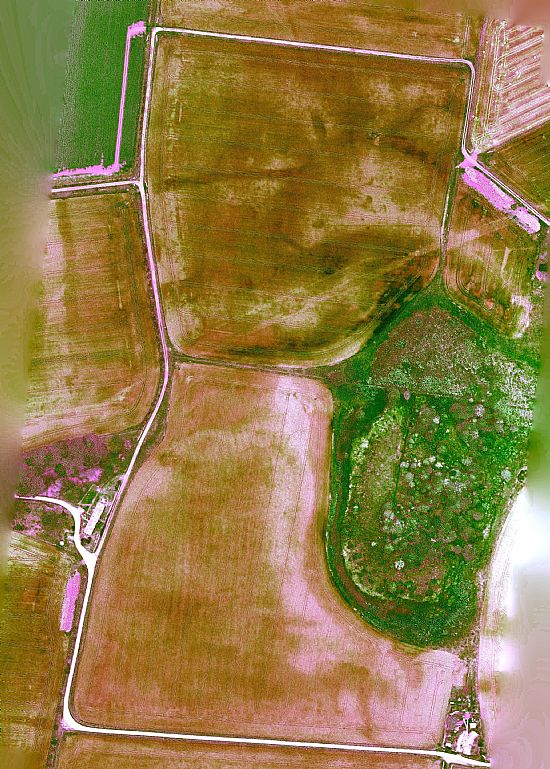Balvattie Enclosed Settlement
2018 Data Structure Report.
The second site excavated in 2018, lying about 350 m south-east of Gilchrist church on Balvattie Farm, was discovered from aerial photographs which show a circular feature in a cultivated field. There are also arc-shaped features further out as well as some linear patterns. The circular feature superficially looks like a roundhouse, but at 26 to 30 m in diameter it seems far too large. The Canmore website simply describes these features as an enclosure of unassigned period. Our excavations showed that the site is a large and complex one, and likely to date from the prehistoric period.
Trench 3 picked up the circular feature nicely, revealing a ditch about 2 m wide and up to a metre deep, The upper part of the ditch has been destroyed by ploughing, which is why there is no indication of it on the surface. There was much evidence of intensive burning within the area enclosed by the circular ditch, but apart from a few pieces of charcoal and some tiny pieces of bone there was no indication of what the burning had been for. Outside the ditched enclosure were a number of pits about a metre wide and half a metre deep (but originally probably twice as deep). These pits may initially have had large posts with stones packed round the base, but it appears that they are not simple post holes as small pieces of pottery were carefully deposited in these pits. Similar pits dating from about 5000 years ago have been found in southern England. However, until scientific results are obtained we are unable to say how old these pits are and what their function was.
We also excavated a very large pit that stood out as a prominent lush mark on aerial photographs (Trench 4). Dumped field gathered stones and much evidence of burning filled the higher levels of the pit but the original pit, 2 m deep, may have been a naturally formed hole that filled up with slope-washed coarse sand and gravel and was levelled off much later.
Trench 6 picked up one of the curved ditches seen on aerial photographs. This was a well-constructed, narrow and straight-sided ditch, ending with a distinct terminal feature and a post hole adjacent to it. A tentative interpretation is that it may have been a ditch or slot for a wooden palisade with a gap for an entrance or gateway and an additional post for strength. The linear features seen on aerial photographs may represent paths running through the entrance way to the inner circular enclosure where some activity was being carried out that required intense burning. These features may not all be the same age, but they are likely to be Neolithic or Bronze Age. There is no suggestion that the site at Balvattie was defensive in the way that the fort at Gilchrist appears to have been, but the Balvattie site again represents a huge amount of labour input suggesting a complex social order was in control.
3D models of excavation trenches.

Aerial quadcopter view of the area by Andy Hickie - Summer 2018.
See also the Photo Gallery and Video Blog Post.

